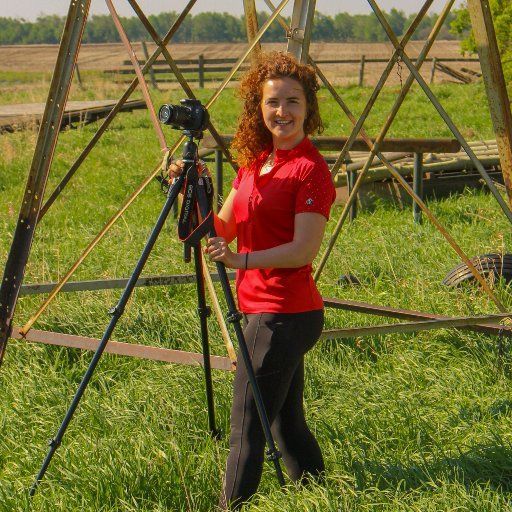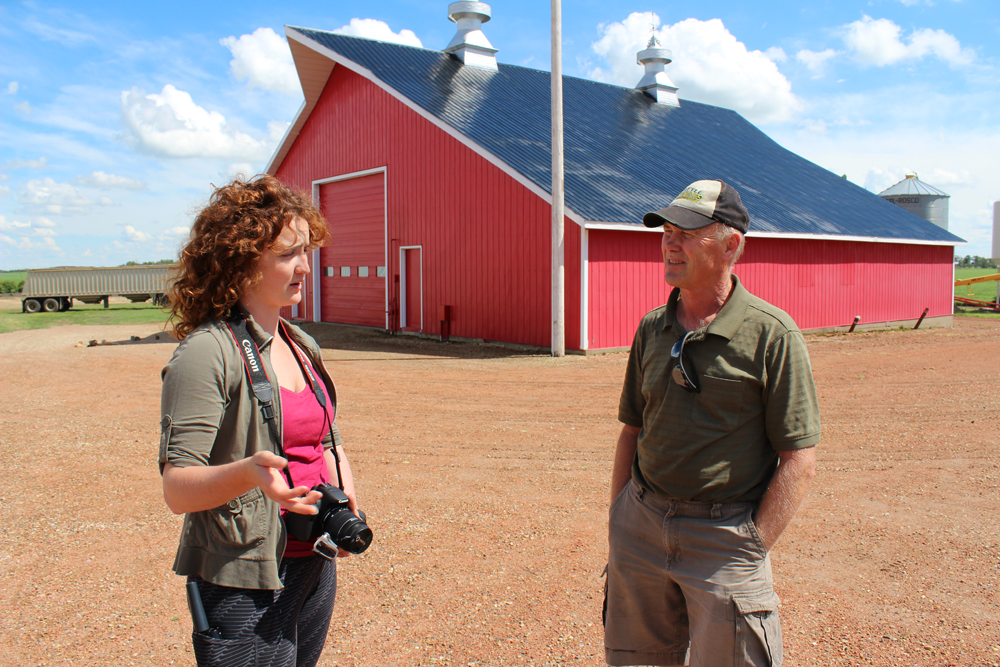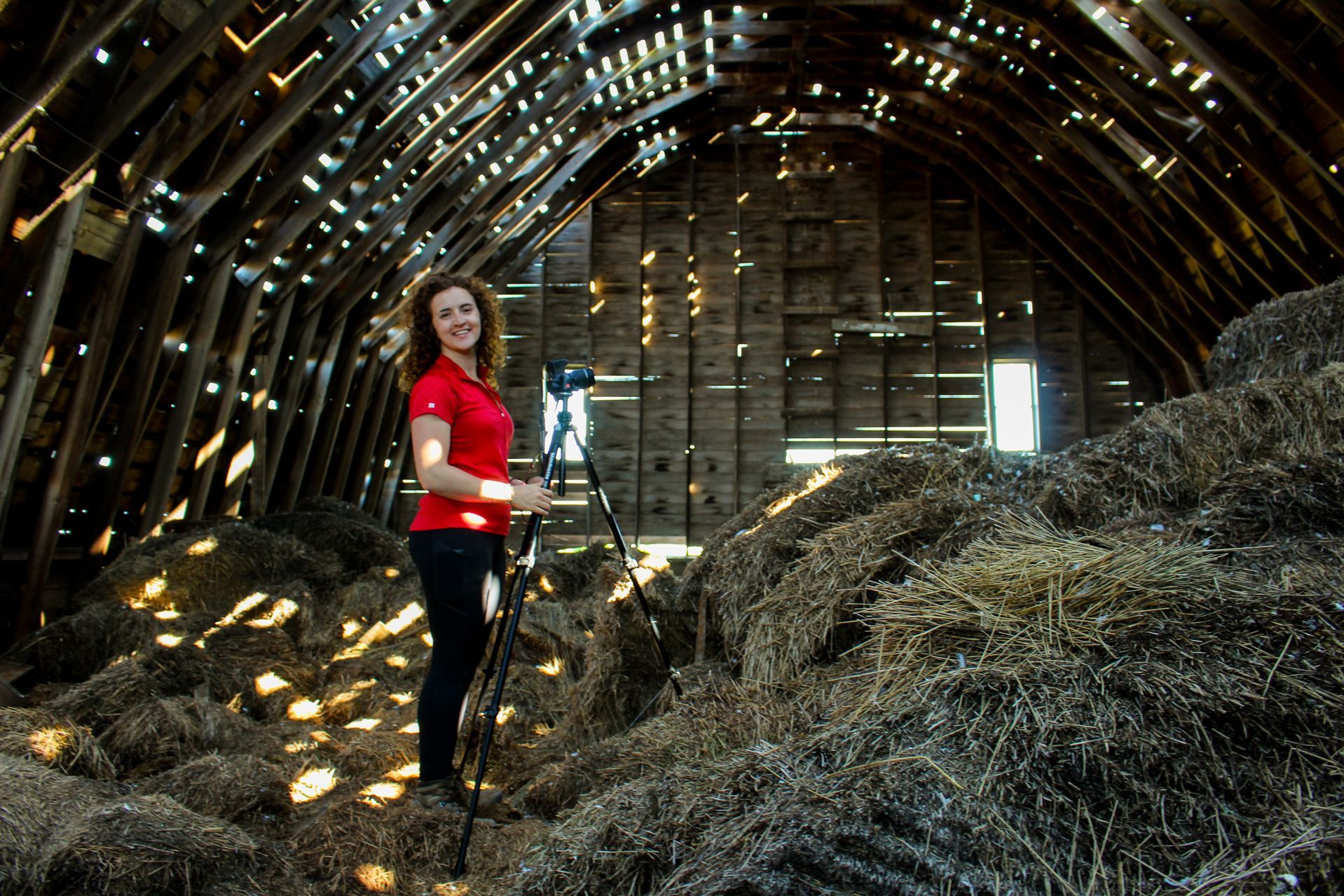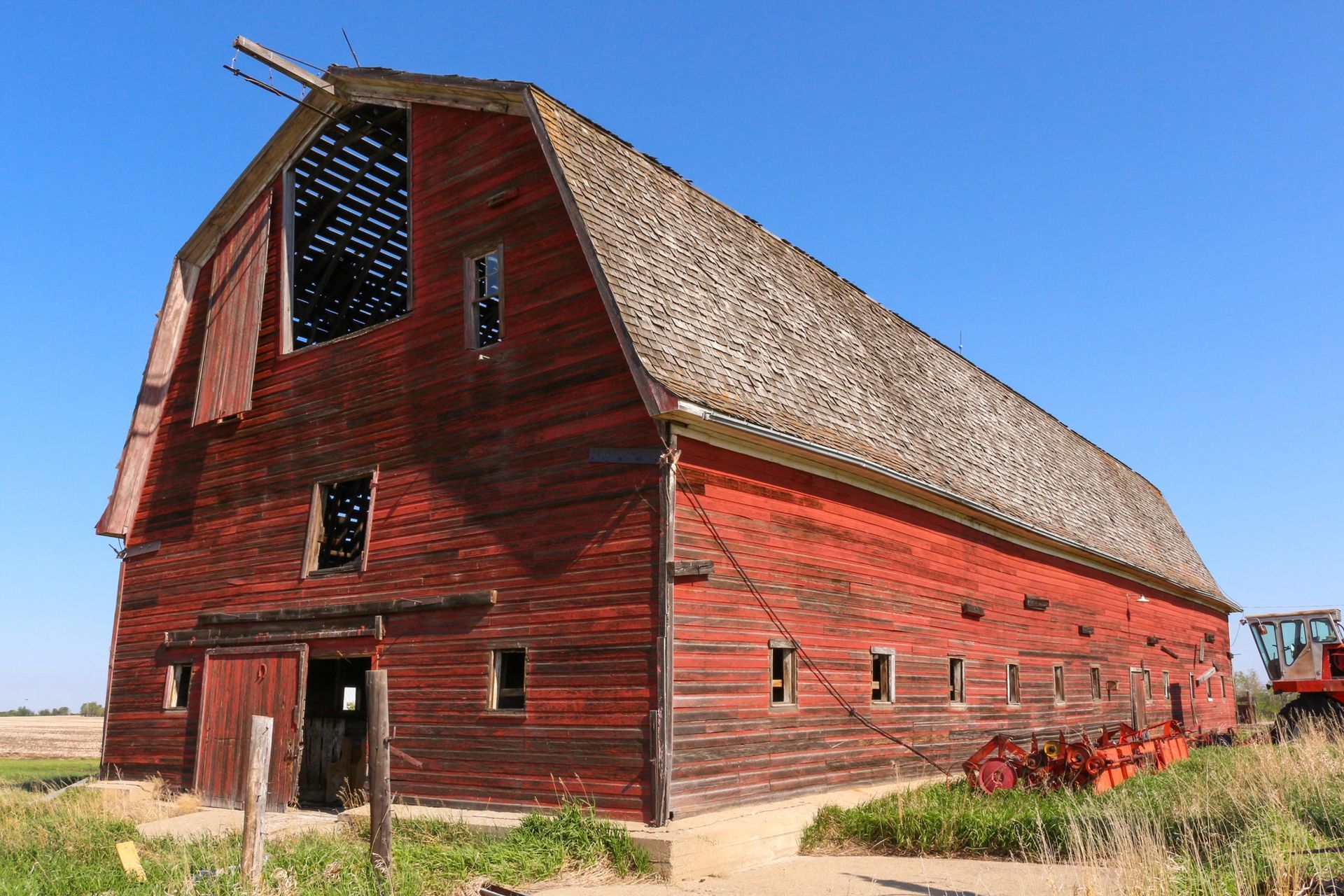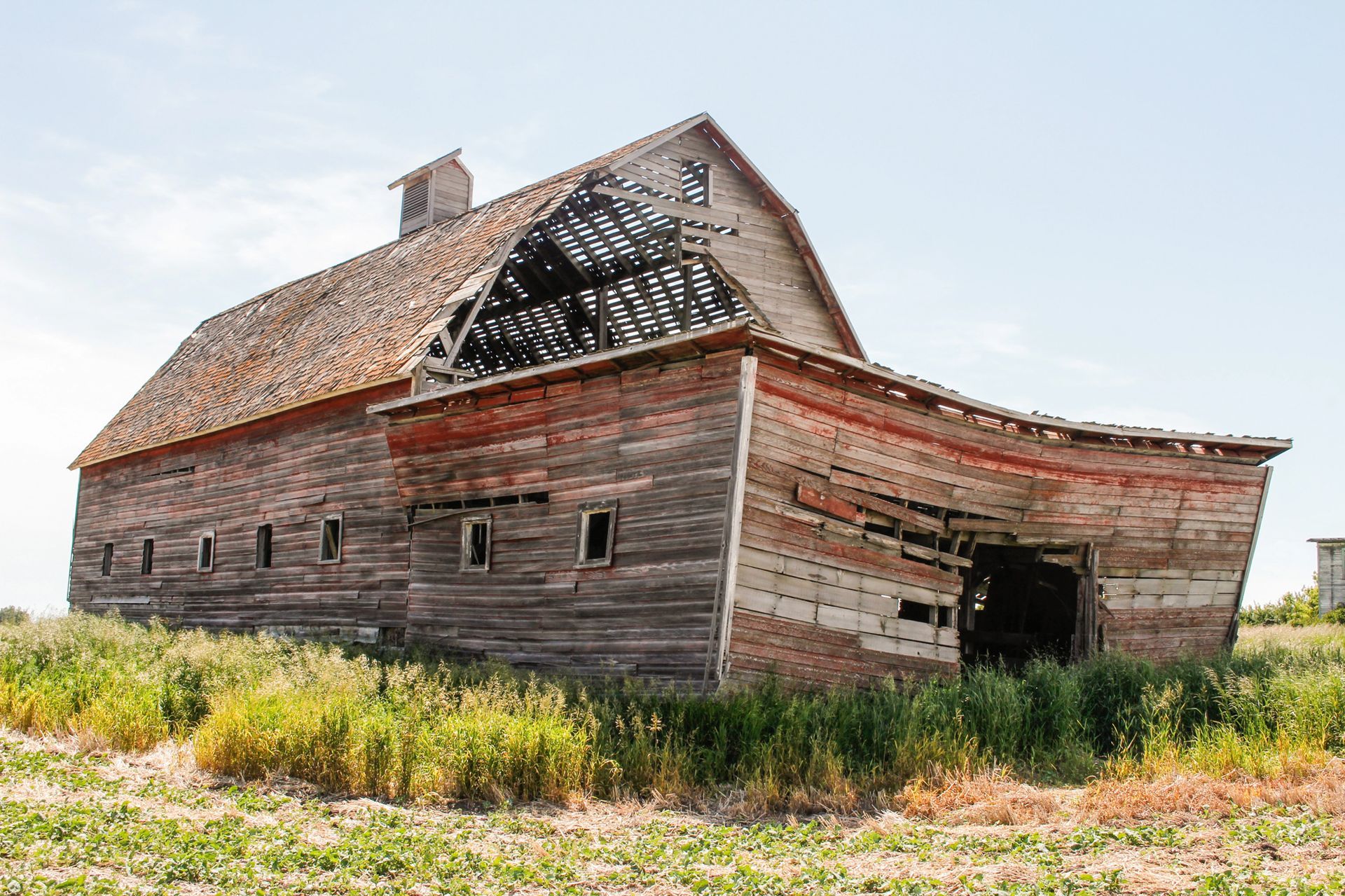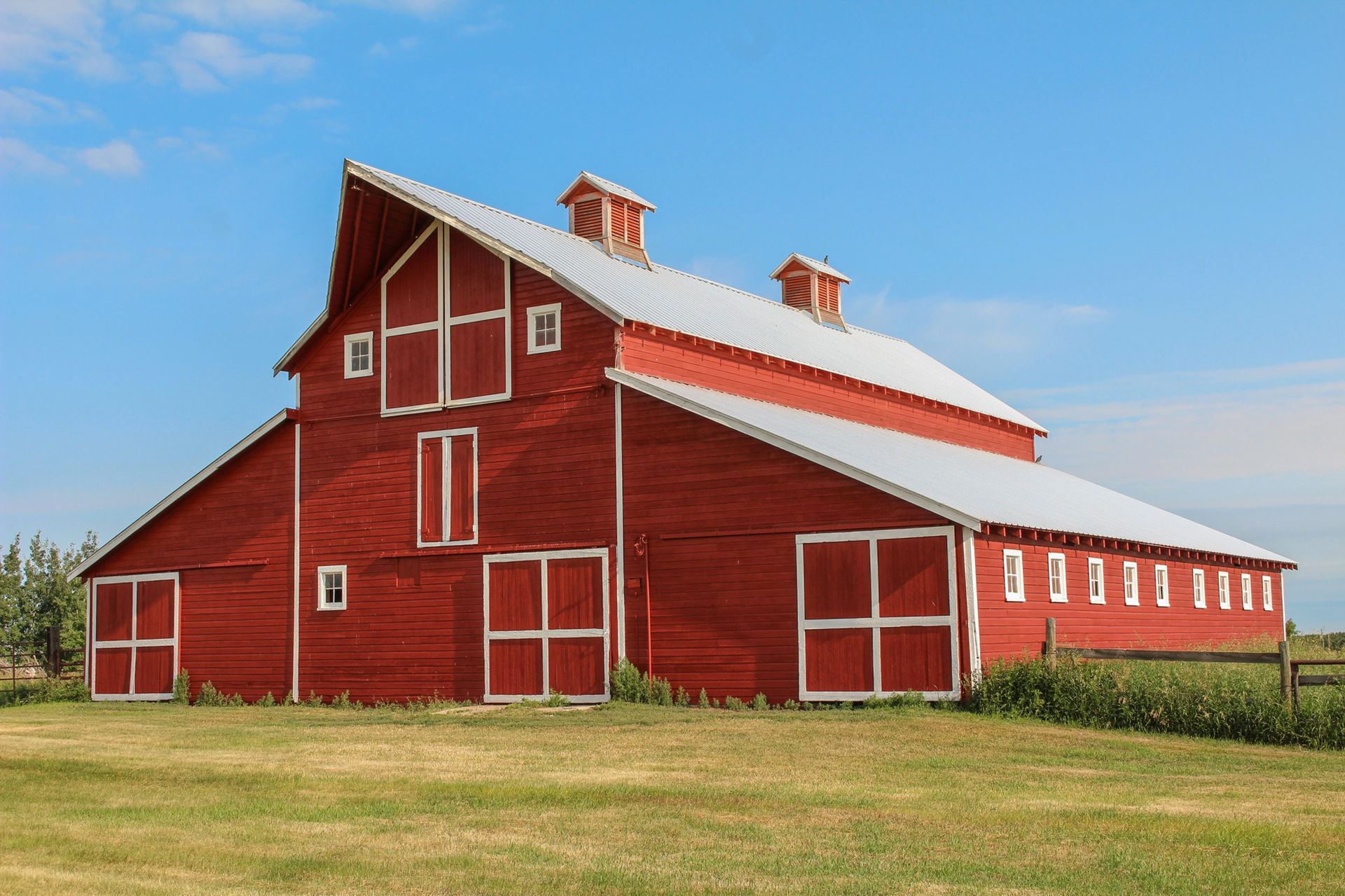Stories of Alberta: Heritage Barns of Flagstaff
Flagstaff County is keeping local history alive one barn at a time
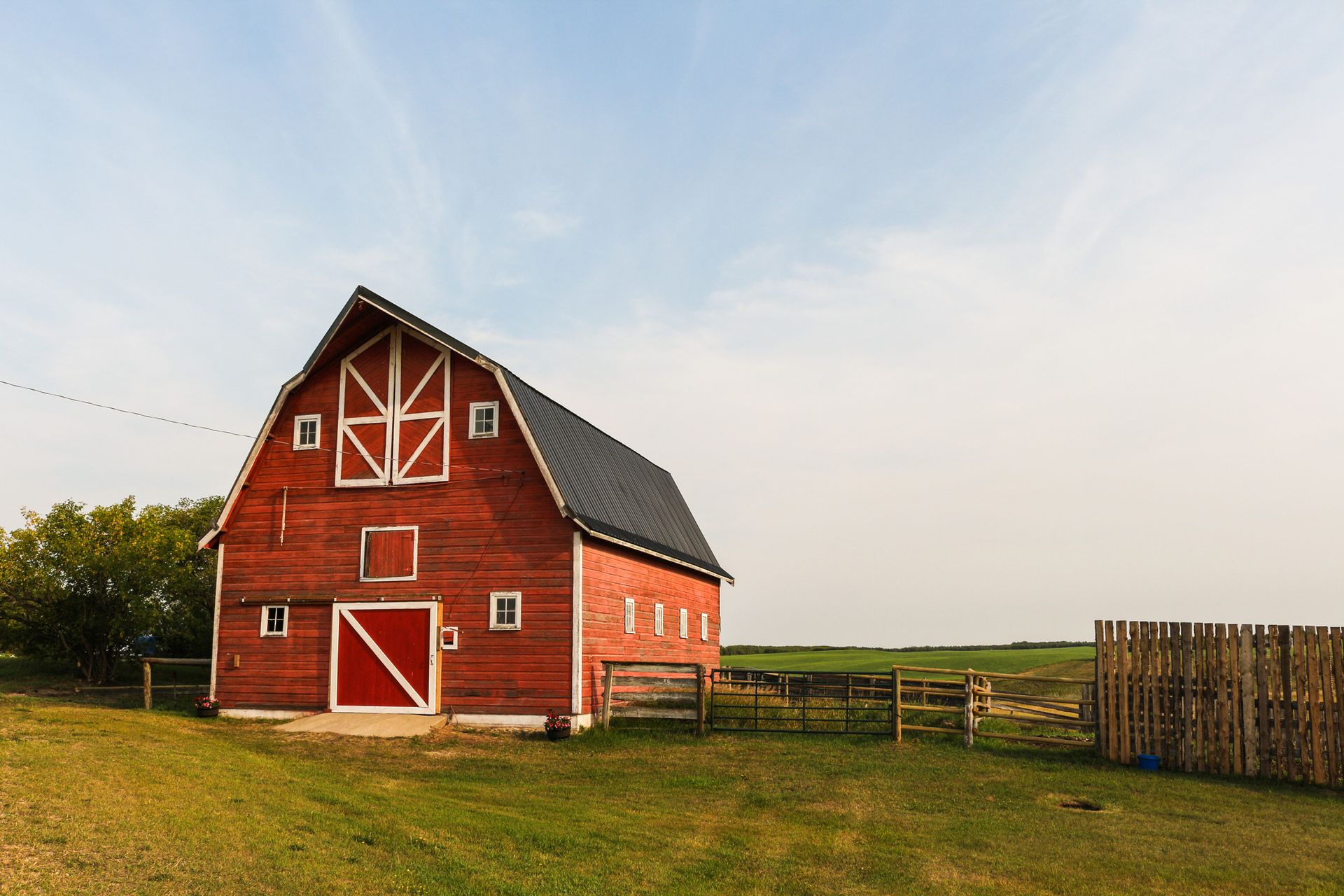
"A barn isn’t just something functional anymore — it’s the heart of the farm.”
The year was 1905 when Martin Ullrickson started building his homestead near Galahad, Alberta. Born in Denmark, Martin had a very similar story as a lot of rural Albertans — emigrating to North America at a young age and working on a ranch raising cattle for sale.
But the history books tell us that Martin’s story isn’t actually all that typical. In 1908, after starting his family, Martin encountered a few notorious cattle rustlers on his ranch who ended up being part of the “worst gang of cattle thieves ever to hit western Canada.” The encounter ended in an old Western-style gunfight and many of the rustlers behind bars.
While the cattle rustler’s story was making headlines for weeks back then, stories like Martin’s aren’t well-known by Albertans today. That’s why Flagstaff County, with the help of a local university student, took on the Heritage Barns of Flagstaff project to document these barns and the local history held within their walls.
The Heritage Barns of Flagstaff project
Flagstaff County is made up of 10 rural communities, including villages, hamlets and towns, with deep roots and a rich history. A big part of the history in Flagstaff County stems from the ranches, homesteads and barns in the area that have stood the test of time and are still standing today. These barns offer locals a glimpse into the past and that’s exactly why the Heritage Barns of Flagstaff project began.
In 2015 a University of Alberta student, Sydney Hampshire, was involved with the Peter Lougheed Leadership College — a program for undergraduate students looking to develop their leadership skills. In between years one and two of the program, students were required to complete a 500 hour leadership project over the summer. While many of her classmates decided to do research or volunteer work in Australia or Europe to fulfill the requirement, Sydney went the opposite route.
“Because I grew up in rural Alberta, I really wanted to learn about leadership here,” she says. So Sydney approached the County to see if she could observe how the government worked in the area. Their counteroffer was a bit of a surprise. The County asked if Sydney would help with updating an online database that was taking inventory of barns and old buildings throughout the province.
After agreeing to the project, Sydney decided to take it one step further and dedicate an entirely new site to barns in the Flagstaff region alone.
“There were a few structures that we had on file from a survey that was done previously, and we knew that a few locations had barns on them, so I began reaching out to the owners,” she says. She then interviewed landowners, took photos of the barns, updated the Heritage Barns of Flagstaff website and pulled old stories and articles from town history books. It was a massive undertaking.
Within that first summer, Sydney completed her 500 hours of required work and gathered the stories of 35 barns and the generations of families who owned them. “The variety of stories we collected to go along with the barns made it seem kind of like a movie,” she says.
For the next three and a half years Sydney continued her work with the County collecting inventory for the website. At the end of the project, Sydney had designed two coffee table books full of photos and stories about the barns and the families who owned them. Flagstaff County held a book launch for each volume in the series and continues to sell the books not only to Albertans but those around the world.
For Sydney, it was more than collecting stories, it was about preserving history. “Many of the people who knew the stories best had already passed on, but with the website and the coffee table books, we have that data on hand if people are interested in learning about the barns in the future.”
Sydney was surprised to learn that this history also changed perceptions about the role of barns in the community’s history. “For the older generations, the barn was always there and it wasn’t something novel,” she says. “But now, they’re looking at them with new eyes and get to share those stories with their kids and grandkids. A barn isn’t just something functional anymore — it’s the heart of the farm.”
"I know this project will be something we really treasure down the road."
Although the Heritage Barns of Flagstaff project is no longer being worked on continuously, Sydney knows that the project will continue to have an impact on the County residents for a long time. “At first, I thought to myself, ‘Are people going to see any value in this?’ but then it was amazing how open and receptive community members were,” she says. “I feel so lucky to have been involved.”
Sydney and Flagstaff County still encourage locals to submit their barns to become part of the online database and keep the history of the area alive for future generations. “Now is the time because as years go on, it gets harder to collect these stories,” says Sydney. “I know this will be something we really treasure down the road.”
All photos are supplied by and credited to Sydney Hampshire and Flagstaff County.
Browse the Heritage Barns of Flagstaff site to see all barn inventory at heritagebarnsofflagstaff.com

